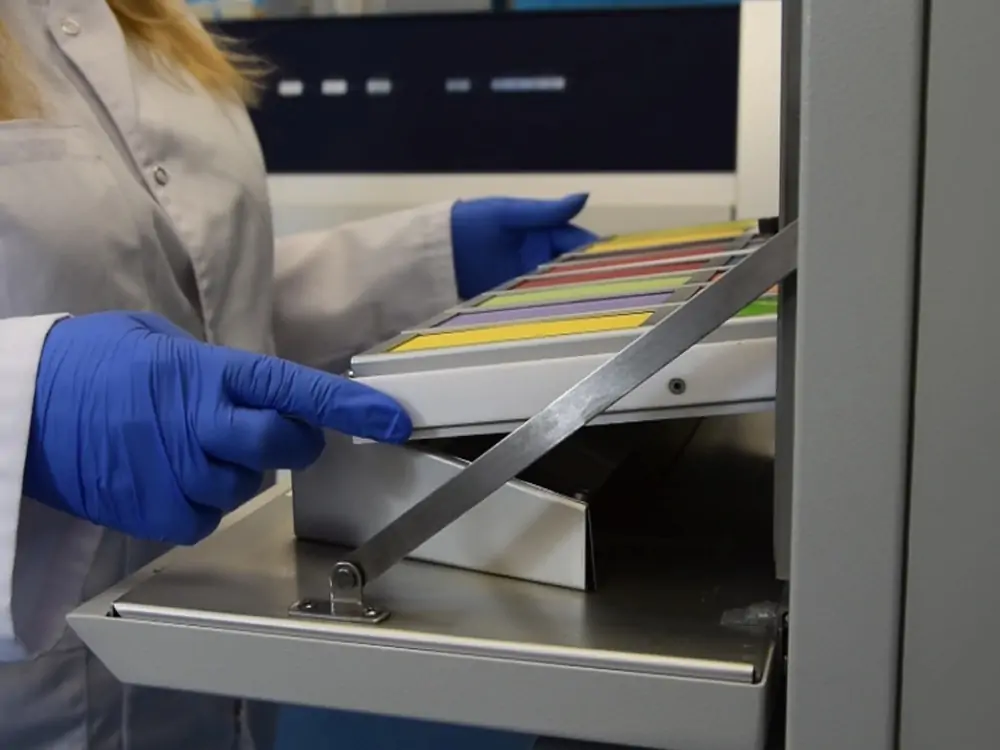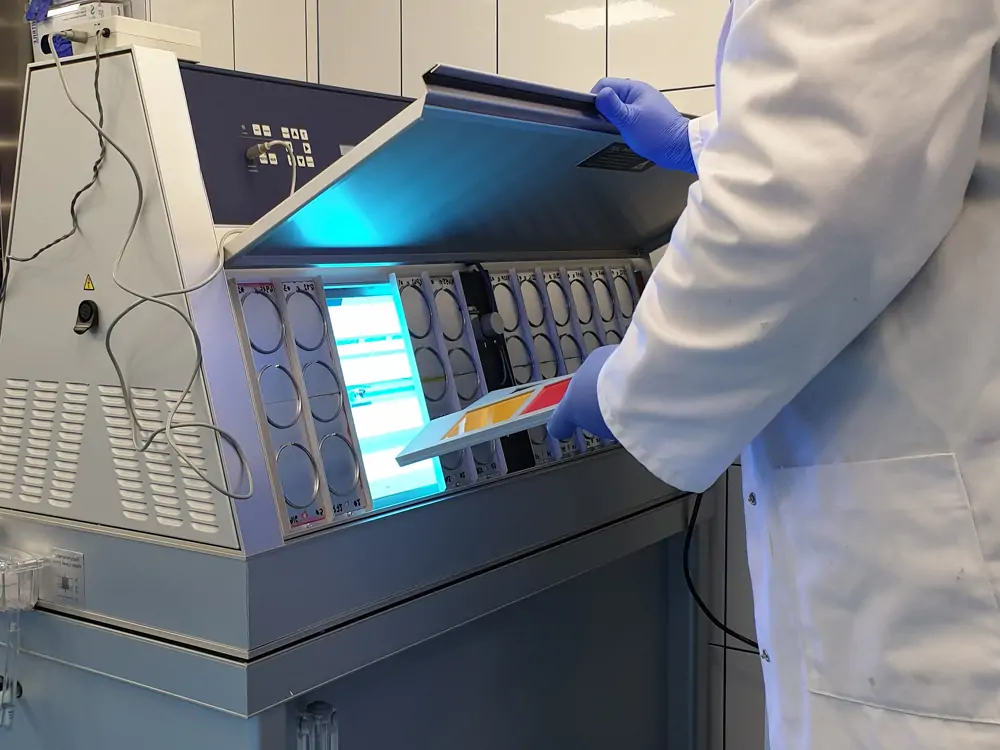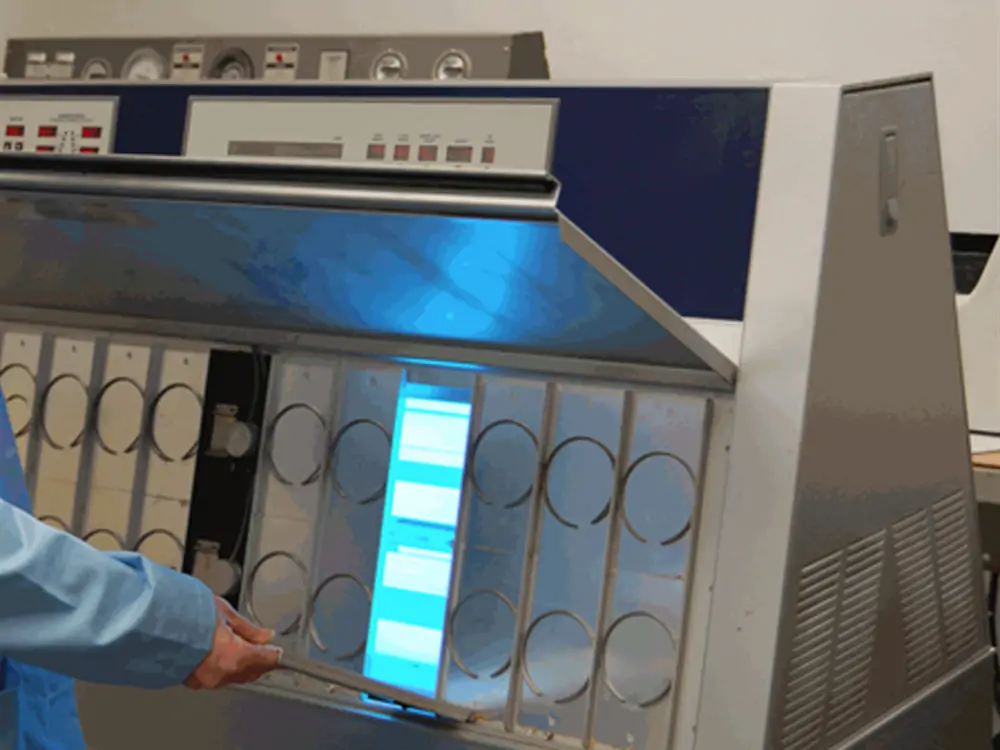Regarding the durability and efficacy of materials, there are two testing methods. These methods are Xenon Arc Testing and UV Testing. These tests allow researchers and manufacturers to assess the performance of various materials. These testing methods are performed under different environmental conditions. Both of these methods aim to achieve similar results. However, there are crucial differences between xenon testing and UV testing.
In this article, we will explore differences in detail. Also, we will shed light on the aspects that set these methods apart.

Comparing the Time Requirements of Xenon Arc and UV Stability Testing
The key difference between xenon testing and UV testing is their time requirements.
- In the xenon arc test, the samples undergo intense exposure to sunlight for a long time. The time ranges from a few hundred to several thousand hours. This exposure allows for an assessment of the long-term effects of light on materials. The testing duration varies depending on the requirements of the industry. The main purpose of the xenon test is to simulate long-term aging effects. It mimics the deterioration of materials when exposed for years.
- In contrast, UV fluorescent testing is a shorter process. In this way, materials get exposed to UV light. The exposure ranges from a few hours to a few weeks. This short testing period allows for a rapid evaluation. It determines the immediate effects of UV on materials. UV test assesses the effects of UV radiation on materials. UV light has a higher energy level. It can cause degradation mechanisms in materials. This includes surface cracking, fading, and loss of mechanical properties.
This helps to understand the time discrepancies between the methods. It also helps to weigh them against the desired level of simulation accuracy.
Investigating the Durability of Xenon Arc and UV Testing
Xenon testing and UV fluorescent testing are essential methods to test a material’s durability. But both of these methods have a slight difference in their durability.
- Xenon testing exposes samples to intense light, heat, and moisture. It simulates the environmental conditions. This helps to identify materials that can resist fading, cracking, or warping. This is due to prolonged sunlight, humidity, and heat. Thus, the weathering test accelerates the aging process. It provides valuable data on the expected lifespan of materials.
- In contrast, a UV test focuses on assessing the material’s resistance to UV radiation. UV causes degradation in materials. This leads to color fading, embrittlement, and decreased mechanical properties.
Xenon testing simulates environmental conditions. UV stability testing focuses on assessing materials under UV.

Evaluating the Cost of Xenon Arc and QUV Testing
Cost considerations play a key role in Xenon testing and UV testing. The cost of these methods depends on several factors. This includes sample preparation, test duration, testing standards, and equipment. In general, weathering tests tend to be more expensive compared to UV testing.
- The xenon test requires equipment such as xenon arc weathering chambers. These simulate sunlight using xenon arc lamps. These chambers replicate various environmental conditions. This includes temperature, humidity, and the light spectrum. The extended duration of the xenon test leads to higher costs. It requires more resources and maintenance of the equipment for testing.
- UV stability testing involves exposing samples to available UV lamps. These UV lamps are affordable compared to xenon arc weathering chambers. The short duration of the UV test reduces the costs of testing time and equipment.
Examining the Efficacy of Xenon Arc and QUV Testing
Both methods are valuable in their respective domains.
- Xenon arc testing can simulate outdoor conditions. They check materials that withstand long-term exposure to sunlight and outdoor elements. This helps manufacturers identify weaknesses. Thus, they can make informed decisions when selecting materials.
- UV stability testing excels at evaluating a material’s immediate response to UV radiation. This method determines the resistance. It detects resistance to yellowing, embrittlement, color, and fading. By exposing materials to UV doses, it provides valuable information. It helps to detect the stability of the materials. Thus helping manufacturers make products meet performance standards.
Analyzing the Spectral Output of Xenon Arc and UV Testing
A key difference between both tests is the spectral output of the light sources.
- In the weathering test, the light from the xenon arc lamps mimics the sunlight spectrum. It includes both visible and UV light. This helps to check the response of the material.
- In contrast, UV stability testing evaluates the effects of UV light. It focuses on wavelengths of UV radiation. However, it does not give a complete picture of a material’s response to the full solar spectrum. Thus if a material undergoes a natural sunlight spectrum, it is of critical concern. So, xenon arc weathering testing is a more considerable method than UV fluorescent testing.
Exploring the Different Applications of UV and Xenon Arc Testing
Xenon arc testing and UV testing find applications across a wide range of industries.
- The xenon test works in aerospace, construction, textiles, and automotive. In automotive, it works to test the exterior and interior components of vehicles. These components get exposed to heat, humidity, and sunlight. This checks if materials can be maintained for a long lifespan.
- QUV testing finds extensive use in industries to resist UV degradation. This includes industries such as paints and coatings, plastics, textiles, and outdoor equipment. Under UV exposure, manufacturers meet UV stability standards. Also, it helps to avoid issues of fading and loss of mechanical properties.

Discovering the Benefits of Xenon Arc and UV Testing
Xenon arc and QUV testing are indispensable tools. These help in assessing the durability and performance of materials and products. The xenon test simulates the effects of natural sunlight. It provides valuable insights into how a material can withstand exposure. It is important to understand how materials deteriorate under UV exposure. It is crucial for the development of long-lasting products.
- The xenon test replicates natural sunlight. It helps to test the behavior of the material. The test occurs under various stress factors. It is important to identify weaknesses in the early stages. This helps to make informed decisions about the selection of materials. Also, it focuses on performance optimization and product design.
- In contrast, the UV test is a faster and more cost-effective approach. It assesses the immediate effects of UV radiation on materials. This method is useful for rapid assessment of materials or products. It is also important to test the resistance of the materials to UV degradation.
Exploring the Limitations of Xenon Arc Weathering Testing and UV Testing
Besides benefits, weathering, and UV stability testing also have drawbacks.
- One limitation of the xenon test is that it does not replicate outdoor conditions. It does not assess how materials work in real-world scenarios. This test makes efforts to simulate temperature, the light spectrum, and humidity. However, variations can still exist. Thus, it is crucial to interpret the test results. It is important to conduct testing in a real-world field for better results.
- QUV testing assesses UV resistance. It focuses on a specific range of UV wavelengths. It does not capture the full range of UV radiation of materials. Additionally, it may not account for other environmental factors that can contribute to material degradation, such as heat and moisture.
Conclusion
In conclusion, both xenon arc weathering testing and QUV testing serve to check material performance under specific conditions. They differ in time requirements, durability evaluation, cost considerations, efficacy, spectral output, and application range. Xenon arc testing excels in simulating long-term outdoor exposure. It provides comprehensive insights into material aging. However, the UV test focuses on evaluating a material’s immediate resistance to UV radiation. It is particularly relevant in industries that require UV stability. By understanding the differences and limitations of these testing methods, manufacturers and researchers can make informed decisions on which approach best suits their testing needs and industry requirements.
For more environmental test chamber, Please visit: https://chiuventionclimatechamber.com
For more environmental test simulation programmes,environmental testing knowledge, instrument knowledge, and environmental testing laboratory knowledge, please contact us: [email protected]